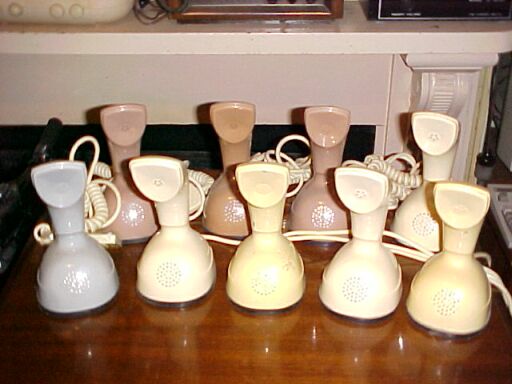

The objects in the pic are called "Ericofons"; singularly, "Ericofon". Pronunciation is "eric-o-fon", where the "o" in both syllables is pronounced like in "bottle". This is the name issued by the PMG (Postmaster General's Department) when these telephones were first issued in Australia in 1963.
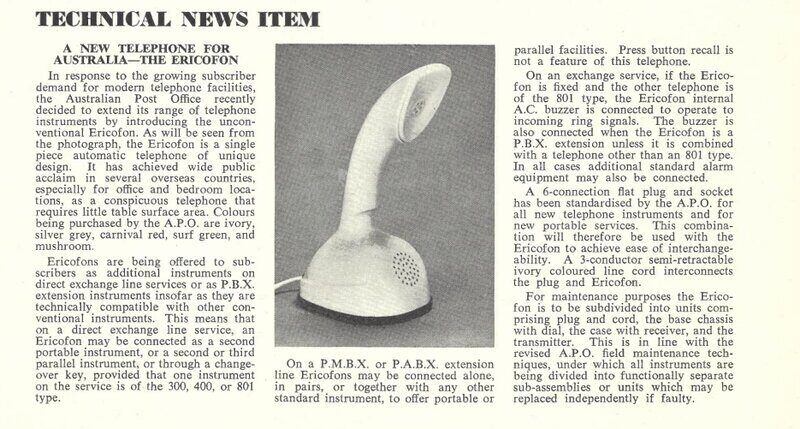
From the Australian Telecommunications Journal, June 1963.
I've been collecting telephones since the
1970's, before they became trendy, and for many years used an Ericofon
rented from the PMG, which in 1975 was split into Telecom Australia and
Australian Post. This particular Ericofon is the middle "mushroom" colour
(colour named by the PMG/Telecom) in the back row of the above pic. It
was wired in parallel with an ivory series 800 phone.
From what I see on the internet, there
are retro trendies and internet sellers who call them by other names, or
use incorrect spellings of the correct name, and claim they: 1) do
not ring on incoming calls, 2) do not contain an internal ringer,
thus requiring an external bell.
So, I hope to correct these points here.
Put a red Ericofon on eBay and watch the vultures circle like they're over
a dead corpse.
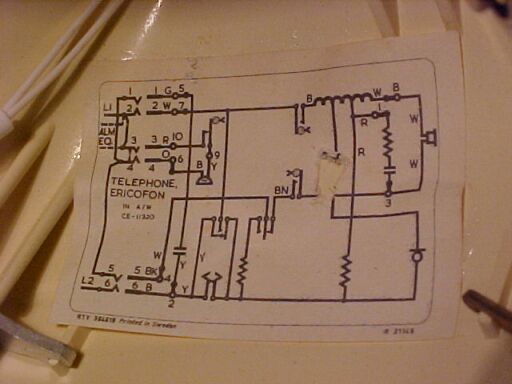
Circuit for the Ericofon. Note that it contains a buzzer connected to pins 3 and 4 of the plug. Notice also how the telephone socket is wired, which is not the same for other kinds of phone.
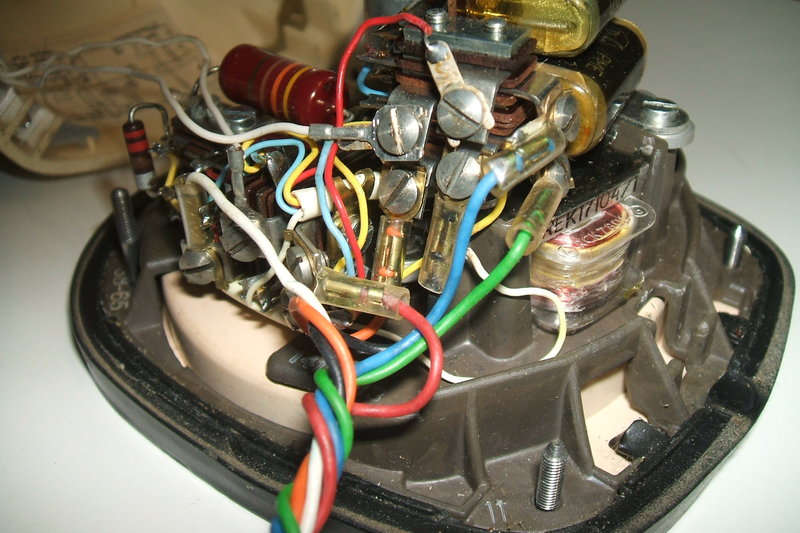
This shows the terminals for each of the
wires from the 6 conductor cord. If, after ensuring the socket wiring is
correct, the Ericofon still does not ring, check these connections.
Be careful screwing the base back onto
the phone body - the base will crack around the screws if they are too
tight. Seat the base into the body first to ensure it's in the correct
position before tightening the screws.
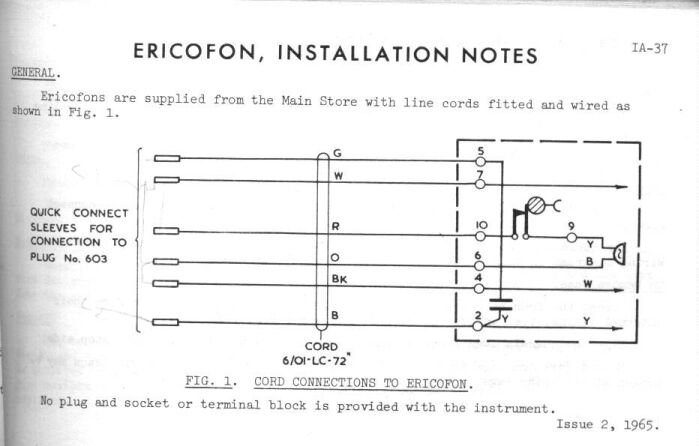
Here's how the six conductor lead is connected to the Ericofon from 1965 onwards. The object connected between terminals 9 and 6 inside the telephone is the sometimes assumed to be non existant buzzer. Hence, the Ericofon can alert to an incoming call without an extension bell.
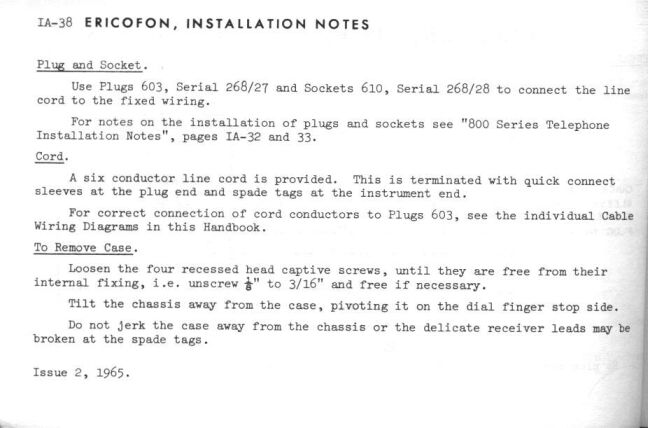
How to open the Ericofon. Indeed, the receiver leads are delicate and it will be very difficult to repair them if they become detached at the receiver end. The receiver is glued into the casing and is not accessable without causing some disfiguration.
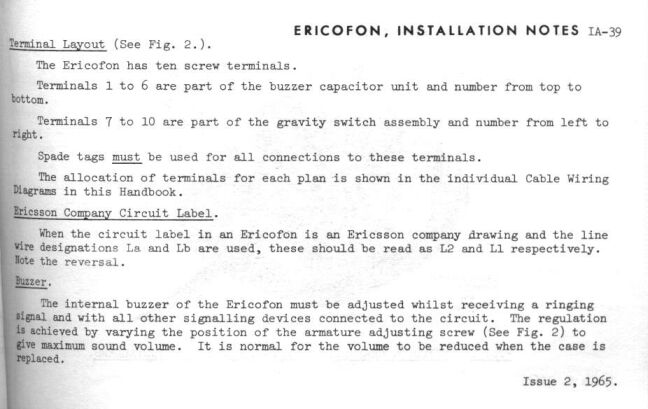
How to adjust the buzzer:
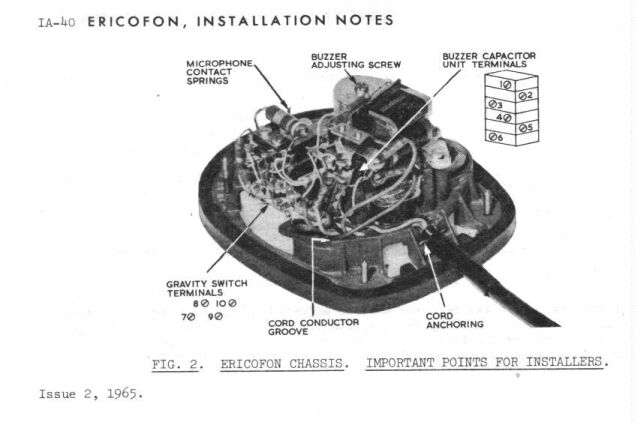
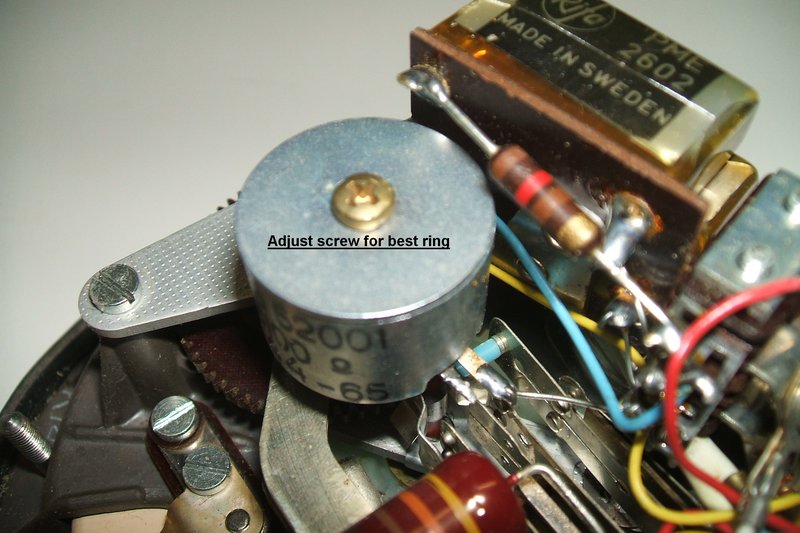
The screw adjusts the tension on the vibrating disc and is set for the best ring.
1) Basic wiring plan:
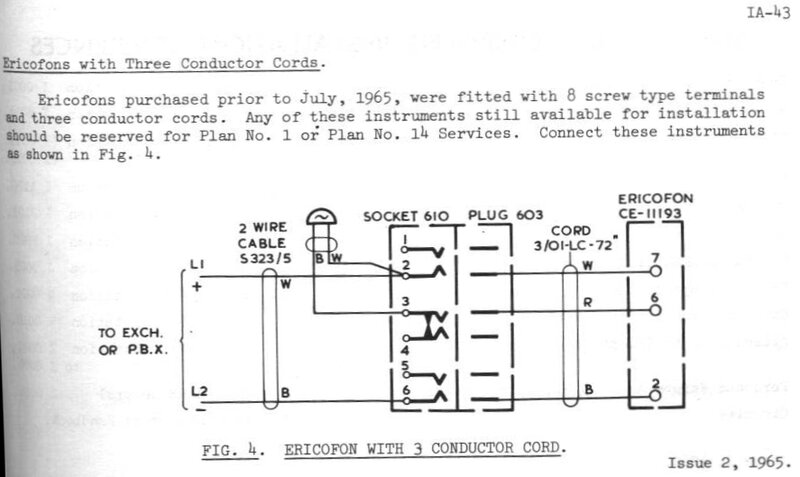
Above shows how the early version of Australian Ericofon is connected as a single telephone to an ordinary automatic exchange line. Incidentally, this wiring plan is the same as used for series 300/400/800 type automatic or central battery telephones. If the external bell is not required simply bridge terminals 2 and 3 of the socket. This version of Ericofon is seldom seen since it was produced for less than two years, and most use the six conductor cord as shown below:
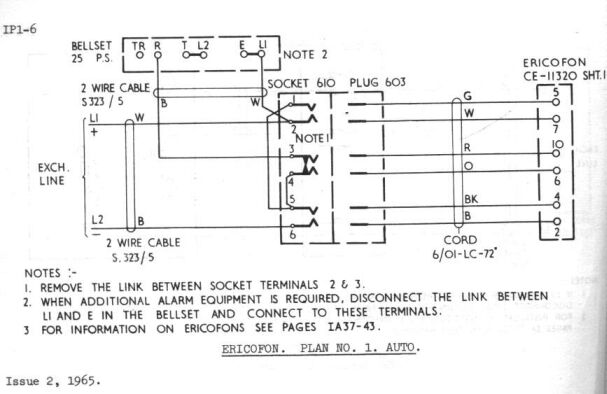
Six conductor cord is more common.
For the post 1965 (and the most common) Ericofons, the six conductor cord is used. Again, if the external bellset is not required, bridge terminals 2 and 3 of the socket. The external bellset is shown connected in series with the buzzer in the Ericofon.
The following diagram from a 1985 publication
shows the complete circuit of the Ericofon with the earlier three conductor
cord:
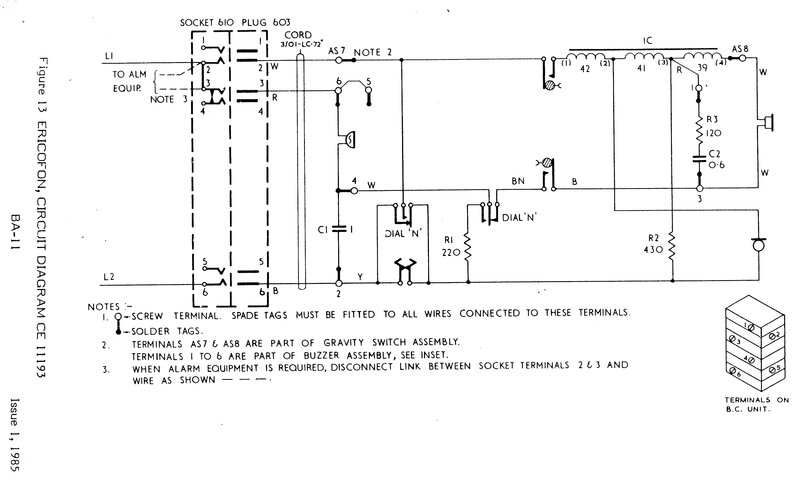
Plug and Socket wiring for the Ericofon.
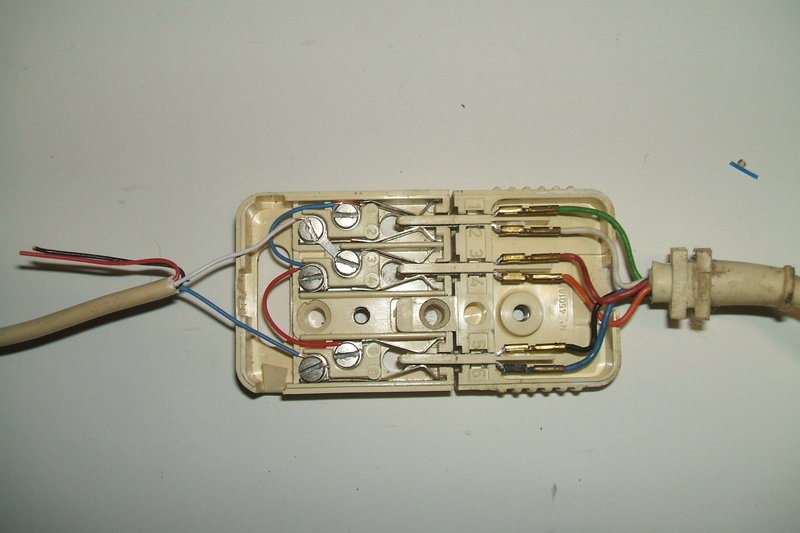
This shows the Ericofon socket wiring in the most basic form. Used when the Ericofon is the only phone connected, or if there are other phones they are all two wire working (e.g. modern tone dialling phones). Note the link between terminals 2 and 3.
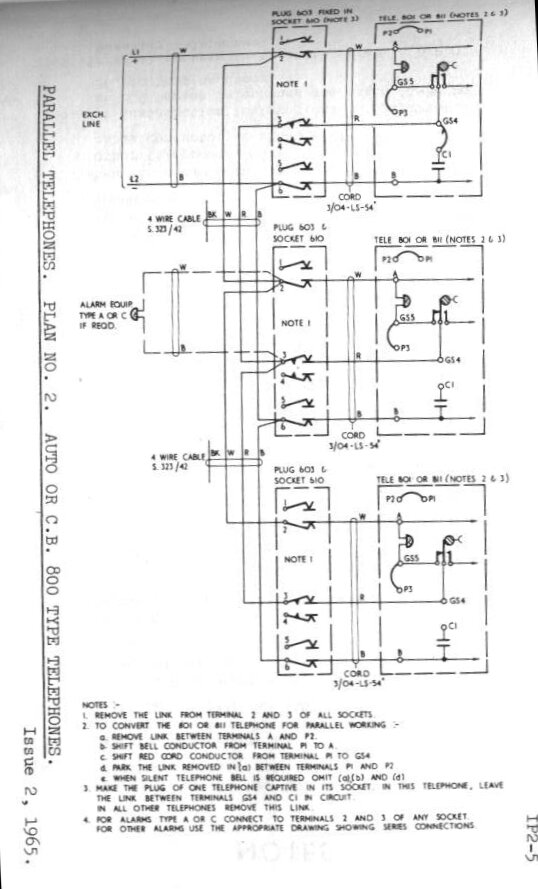
This is the correct way to wire telephones
when there's more than one. Here, 800 series phones are shown, but the
same arrangement is used with 300 and 400 series phones. Simply connecting
phones in parallel with a two wire connection results in bell tinkle when
dialling, and distortion of the dialling waveform. It is an incorrect method
of connection, although it will work. The first telephone provides ring
current for the rest of the phones. Note the bell capacitor in the 2nd
and 3rd phones is not used. This system is also used in the UK, but with
the advent of their BT plug and socket system, the bell capacitor is wired
into the first phone socket ,and three wires are run to all phones, whether
used in parallel or not. This has the advantage that all phones are configured
the same.
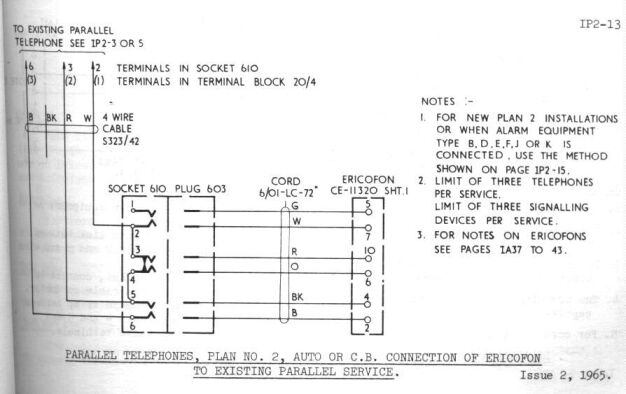
How the Ericofon is connected for parallel working. Due to the design of the Australian phone socket, terminals 3 and 4 connect together when nothing is plugged in. This is used to maintain continuity in the bell circuit for other wiring plans where bells of other phones are connected in series. However, for the standard parallel plan where an Ericofon is used, unplugging it shorts out the bells in the other phones, which can be a useful feature when you don't want to be annoyed by incoming calls.
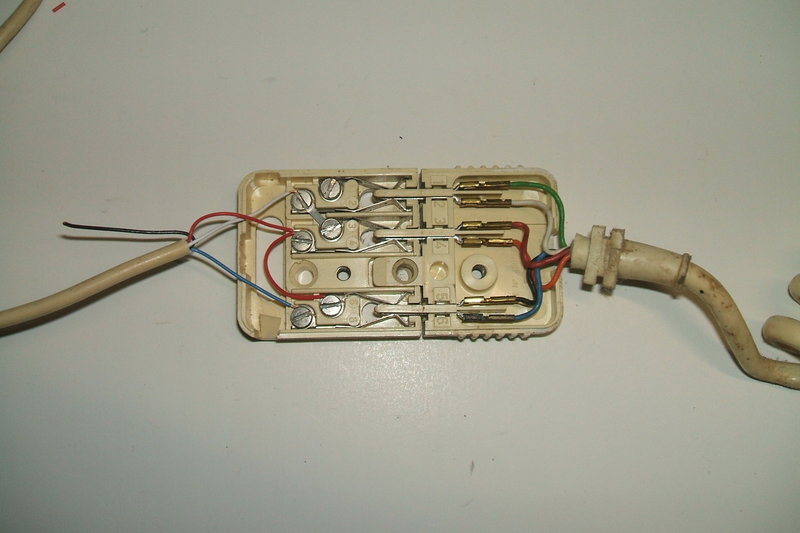
The above shows the Ericofon socket wired for a parallel service (where there are other 300,400, or 800 series phones on the line wired for parallel working). Make sure the link is present between terminals 2 and 3.
Note that in modern installations where electronic (tone dialling) phones are used, these are all two wire working. Their electronic ringers are immune to "bell tinkle" and do not cause impulse distortion of the dialling waveform. This kind of phone is simply wired in parallel to the others on the line, using only pins 2 and 6. It will be generally found that phone sockets installed after the mid 1980's, when 800 series phones were no longer issued, are simply wired with only pins 2 and 6 connected. The strap between pins 2 and 3 is usually still present, but is not required with two wire phones.
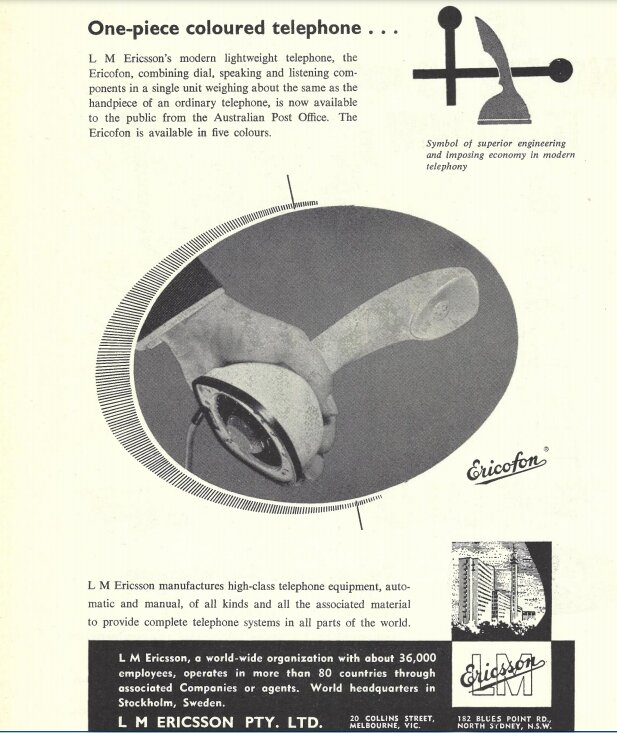
Advertisement in the Australian Telecommunication Journal for June
1963. Notice the correct spelling of the name, "Ericofon".